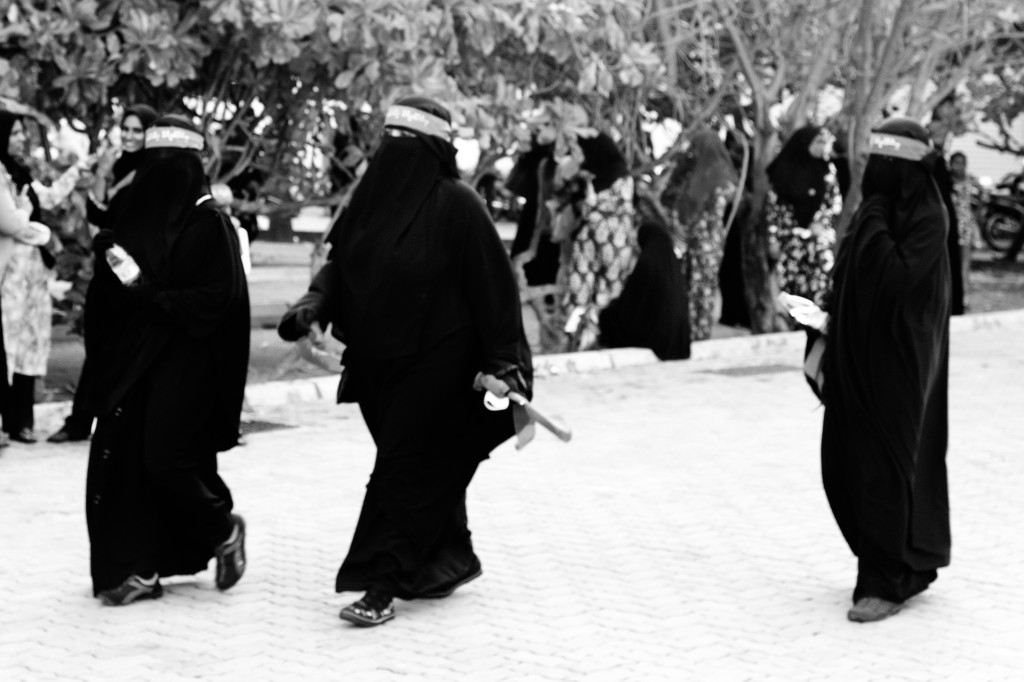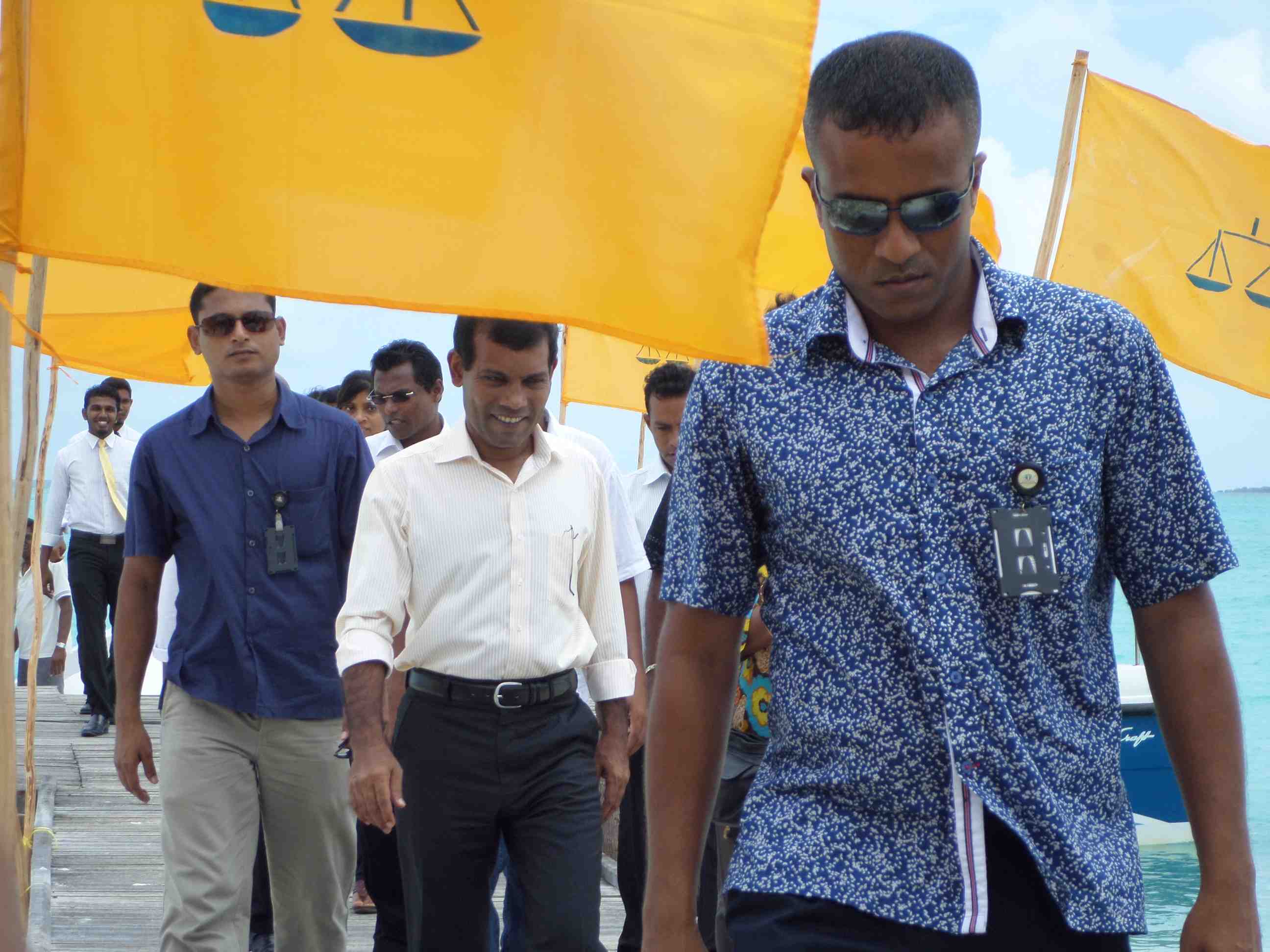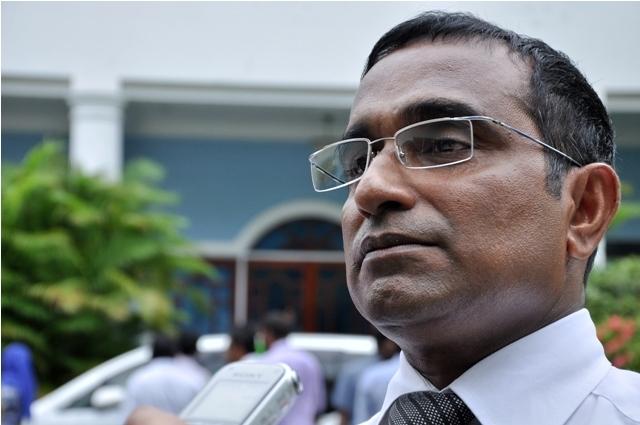The long road from Islam to Islamism: a short history

by Azra Naseem and Mushfique Mohamed
Popular Maldivian history does not go much further back than the 12th Century, when King Dhovemi Kalaminja converted to Islam and ruled that all his subjects must follow suit. Long forgotten or neglected history books, however, tell us that life in the Maldives—or Maladvipa; Dheeva Maari; or Dheeva Mahal as it was known in antiquity—began centuries previously. The ancient Sri Lankan chronicle of The Mahavamsa connects the origins of Maldivian people to the Sinhalese through the story of excommunicated Indian princes from the Kalinga kingdom in the 6th Century. More recent Maldivian research, A New Light into Maldivian History (1958), traces Maldivian life even further back to the 3rd Century. Some historians have theorised that the first settlers in the Maldives could have emerged as soon as Greco-maritime trade began in the region making it very likely that the first Maldivians were “Prakrit speaking Satavahanas of the Deccan, Tamil speaking Chera, Chola, Pandyas of South India, and Prakrit speaking Sinhalese of Sri Lanka.”
Among these early Maldivians who predate the arrival of exiled Indian princes were descendants of the Tivaru people of ancient Tamil origin who later came to be known as ‘Giraavaru people’. They practised an ancient form of Hinduism involving Dravidian ritualistic traditions venerating Surya, the Sun god. The Giraavaru people, although now so totally assimilated into Maldivian society as to be indistinguishable from the rest, maintained a variety of their distinct traditions and culture until as late as the 1980s. It took a concerted, and often inhumane, effort by the government to finally make them conform to the majority’s norm. Successive governments also made sustained and systematic efforts to wipe out all history of the Buddhist community that had long existed in the Maldives until about 900 years ago. Just like the history of the Giraavaru people, however, the digging does not have to be too deep to uncover just how ingrained Buddhist ways and culture had been in Maldivian life for years. While archaeologists like HCP Bell have uncovered Buddhist structures buried underground, ethnologists like Xavier Romero-Frais have traced the origins of much of classical Maldivian cultural, linguistic and traditional traits to the Buddhist era.
The beginning of the end of Maldivian Buddhism came with Arab domination of trade in the Indian Ocean in the 7th Century. Just as the rise of China and India, and the US foreign policy’s Asia Pivot, have made the Maldives geo-strategically important today, so it was with the ancient Silk Route. Foreign powers were drawn to the Maldives by its location and its abundance of cowry shells, the currency of many. The spread of Islam along the Silk Route is well documented. In the Maldives, it is a widely accepted ‘truth’ that the conversion of the Maldives population to Islam was peaceful—people willingly converted with their King. There are, however, historical accounts that dispute the narrative exist in the form of writing on copperplates (Isdū Lōmāfānu) dating back to the 12th Century. These have not been made widely accessible to the public. In their place is a legend, first told orally then formalised as historical fact and included in primary school text books, which depicts Maldivian conversion to Islam as a reaction to the cruel deeds of a sea demon. As the story goes, the demon appeared like a ‘ship of lights’ once a month, demanding virgin girls to be delivered to it at night to a designated location. In the morning the demon would be gone, and the virgin would be found dead. A Berber or Persian, who was visiting Maldives at the time, volunteered to go to the demon in place of the chosen virgin one night. He stayed up all night reciting the Qur’an. When the demon appeared, the sound of the Qur’an gradually diminished it in size until it was small enough to be put into a bottle. The Arab traveller sealed the bottle and disposed of it into the deep blue sea, banishing it forever. A grateful King Kalaminja converted to Islam, and his obedient subjects followed suit. Hundreds of years of Buddhism disappeared, allegedly, without trace. From then on King Kalaminja became Sultan Muhammad Ibn Abdullah and Maldives became 100 percent Muslim.
The first major threat to the new Maldivian way of life came four centuries later, with Portuguese occupation in the 16th Century. Unlike latter colonial powers like the Dutch and the British, the Portuguese occupiers did not allow Maldivians autonomy in their internal affairs. Stories of Portuguese wine-drinking and merry-making abound in Maldivian historical accounts of their presence. One of the most potent weapons used to rally Maldivians behind the efforts to oust the Portuguese was religious rhetoric—the biggest threat from the Portuguese occupation, it was said, was to the Islamic faith of Maldivians. The day on which the Portuguese were defeated is now marked as the National Day, and the chief protagonists in the story of their ouster are venerated as the most heroic of figures in the history of the Maldives.
Religious rhetoric as a means of rallying support for political change, established as a success during the battle against the Portuguese, was once again deployed with similar triumph in the 20th Century. In 1953, while Maldives was still a British Protectorate, Mohamed Amin Didi became the first President of the Maldives. Amin Didi is largely credited with ending monarchy and steering the country towards a Republic. He is also known as a moderniser and an advocate for women’s rights. Amin Didi’s presidency—and the First Republic—lasted less than a year. Just as religious rhetoric was successfully used in ousting the Portuguese, so was similar discourse produced to brutally end Amin Didi’s presidency. Even the famine caused by WWII was tied to religious discourse and blamed on Amin Didi.
The Maldives’ first experiences of ‘Western modernity’ began during the Second Republic, with the arrival of tourists from Europe. The world had just lived through the counter-culture of the 1960s, the Maldives was no longer a British Protectorate, the Second Republic had been established, and Ibrahim Nasir was the President. Unlike its neighbours and contemporaries in other parts of the world, modernity was not enforced on the Maldives by a foreign power—it arrived with tourists and was adopted voluntarily by many locals, especially in the capital Male’ and surrounding areas. The Islam that existed in the Maldives at this time was an amalgamation of Islamic teachings, Buddhist Eveyla traditions and Sufi practises and rituals. Writers and historians such as HCP Bell, Clarence Maloney, Francois Pyrad and Xavier Romero-Frias have provided rare insights into Maldivian Islamic traditions. Many of them have now disappeared, or been made to disappear, as Western modernity and Islamism took hold of and begun to dictate Maldivian life. The total obliteration of Islam as it was practised in the Maldives for centuries began in earnest with the assumption of power by Maumoon Abdul Gayoom.

